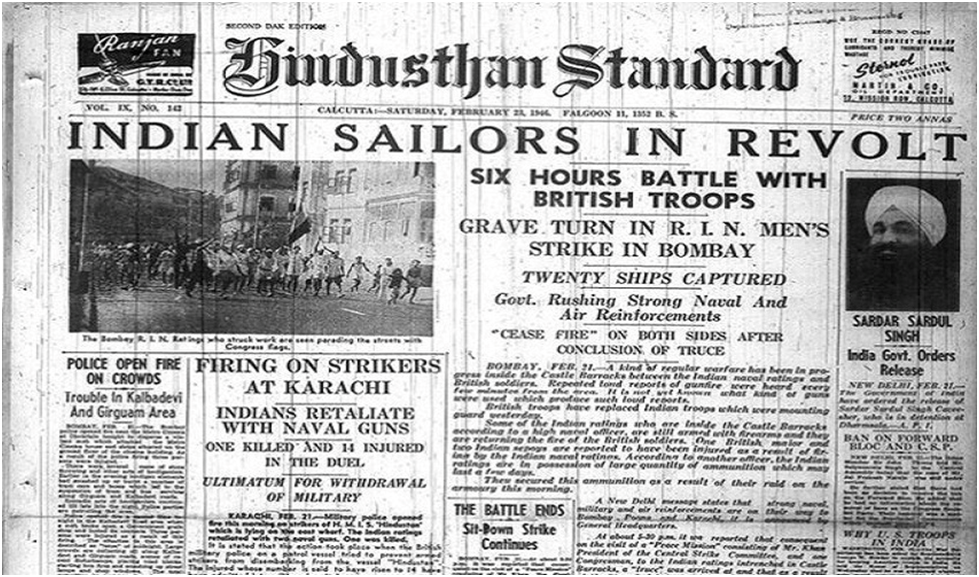
QUES . In what ways did the naval mutiny prove to be the last nail in the coffin of British colonial aspirations in India? UPSC 2014 G S MAINS PAPER 1
HINTS:

The Royal Indian Naval Ratings or Naval mutiny was a revolt of Indian Naval servicemen against British higher officials. The earliest revolt was against racial discrimination by British officials but soon it turned into a rebellion and spread across India.
Must read: Role of Indian National Army (INA) in the freedom struggle of India
The mutiny of the Royal Indian Navy (RIN) broke out on February 18, 1946, and, in only five days, delivered a mortal blow to the entire structure of the British Raj. The RIN Mutiny began in Bombay, and spread throughout British India, covering 78 ships, 20 shore establishments and 20,000 sailors.
The immediate cause of the RIN mutiny was dissatisfaction over the general conditions in the Navy. The Navy (as also the Air Force and the military forces) had been a part of World War II, and they were greatly dissatisfied with the treatment meted out to them on their return.
How naval mutiny prove to be the last nail in the coffin of British colonial aspirations in India?
• ‘For the first time, the blood of men in the Services and in the streets flowed together in a common cause’.
• RIN mutiny happened at a time when the withdrawal of the British from India was obvious.
• The revolt was within the pillar of the British administration of armed forces which played a significant role in establishing the British Empire and crushing rebellions.
• The Royal Indian Navy (RIN) mutiny took place in the aftermath of the Indian National Army (INA) Trials and the revolt of the Royal Air Force. The Indian masses were already in a frenzy over these recent events.
Must read: INA Trials
• The revolt in the armed forces had a liberating effect on the minds of the people. The revolt strongly protested the arrest of rating for scrawling quit India on HMIS Talwar.
• The mutiny also found widespread support among the people who were already discontent with the British establishment. Also, as the mutiny grew, members of the Royal Indian Air Force and the armed forces also joined in the rebellion.
• The mutiny showed the British that they could not longer trust the armed forces in India, and marked the end of their supremacy over the Indians.
Thus, naval mutiny in sense was an indication of what is going to follow in the future if independence was not obtained. The loss of British power after World War II further eroded their belief of retaining one of the prized possessions of the crown, that is India.
